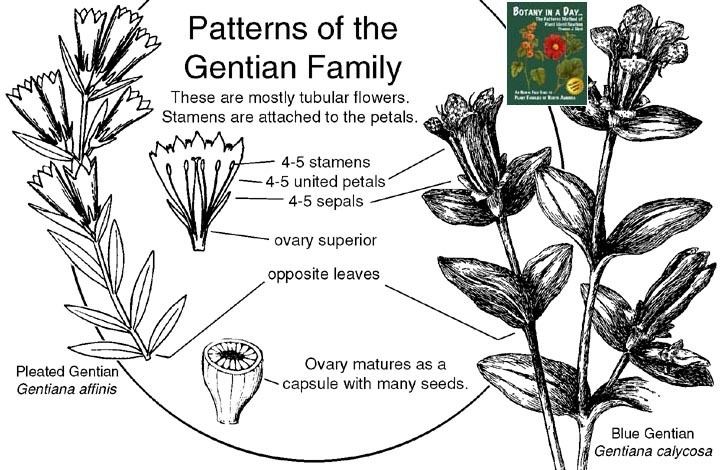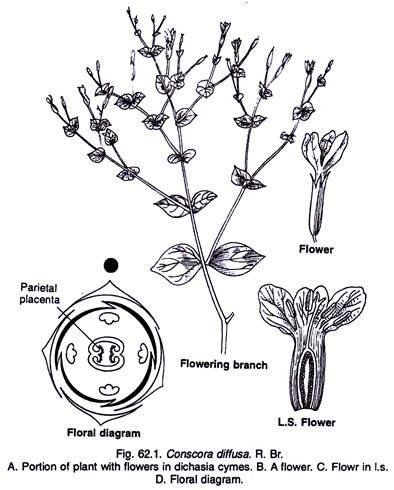Scientific name Gentianaceae Rank Family | ||
 | ||
Lower classifications | ||
Gentianaceae is a family of flowering plants of 87 genera and about 1600 species.
Contents
- Flora gentianaceae centaurium mairei
- Etymology
- Distribution
- Characteristics
- Ecology
- Biogeographic History
- Uses
- Taxonomy
- Tribes
- References
Flora gentianaceae centaurium mairei
Etymology
The family takes its name from the genus Gentiana, named after the Illyrian king Gentius.
Distribution
Distribution is cosmopolitan.
Characteristics

The family consists of trees, shrubs and herbs showing a wide range of colours and floral patterns. Flowers are actinomorphic and bisexual with fused sepals and petals. The stamens are attached to the inside of the petals (epipetalous) and alternate with the corolla lobes. There is a glandular disk at the base of the gynoecium, and flowers have parietal placentation. The inflorescence is cymose, with simple or complex cymes. The fruits are dehiscent septicidal capsules splitting into two halves, rarely some species have a berry. Seeds are small with copiously oily endosperms and a straight embryo. The habit varies from small trees, pachycaul shrubs to (usually) herbs, with ascending, erect or twining stems. Plants are usually rhizomatous. Leaves opposite, less often alternate or in some species whorled, simple in shape, with entire edges and bases connately attached to the stem. Stipules are absent. Plants usually accumulate bitter iridoid substances; bicollateral bundles are present. Ecologically, partial myco-heterotrophy is common among species in this family with a few genera such as Voyria and Voyriella lacking chlorophyll and being fully myco-heterotrophic.
Ecology
Some of these plants have limited ranges and are protected under governmental oversight. For example, Gentianella uliginosa (Dune Gentian), which occurs in some limited areas of Wales and Scotland, is a priority species under the Biodiversity Action Plan of the United Kingdom.
Biogeographic History

Gentianaceae are distributed worldwide, but most species occur in temperate zones. According to Merckx et al., the neotropics were an important area for the early diversification events in Gentianaceae, most of which occurring during the Eocene. However, Pirie et al. suggested that ancient vicariance cannot be ruled out as an explanation for the early origins of Exaceae across Africa, Madagascar and the Indian subcontinent unless a strong assumption is made about the maximum age of Gentianales.
Uses
Economically, some species are cultivated ornamental plants and many species yield bitter principles used medicinally and in flavorings.
Taxonomy
The family was described for the first time by Antoine Laurent de Jussieu in 1789.
Tribes



